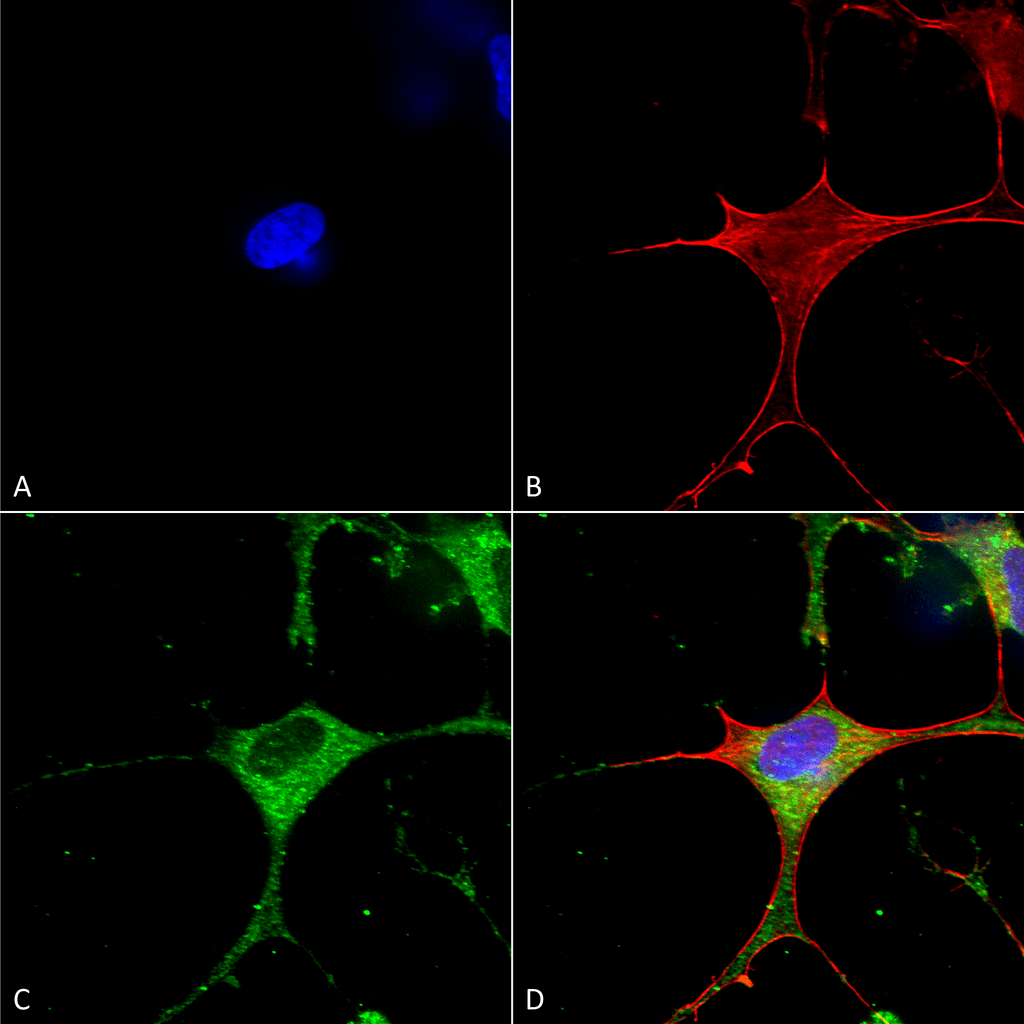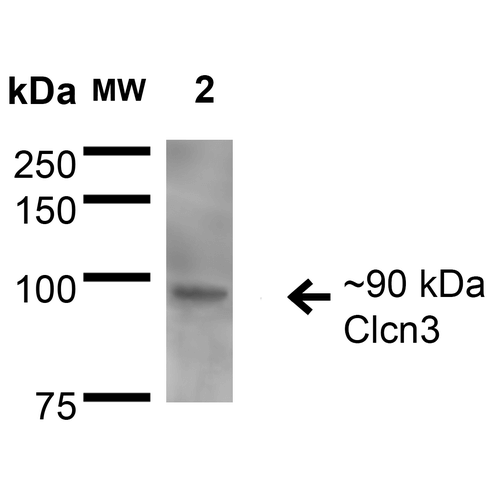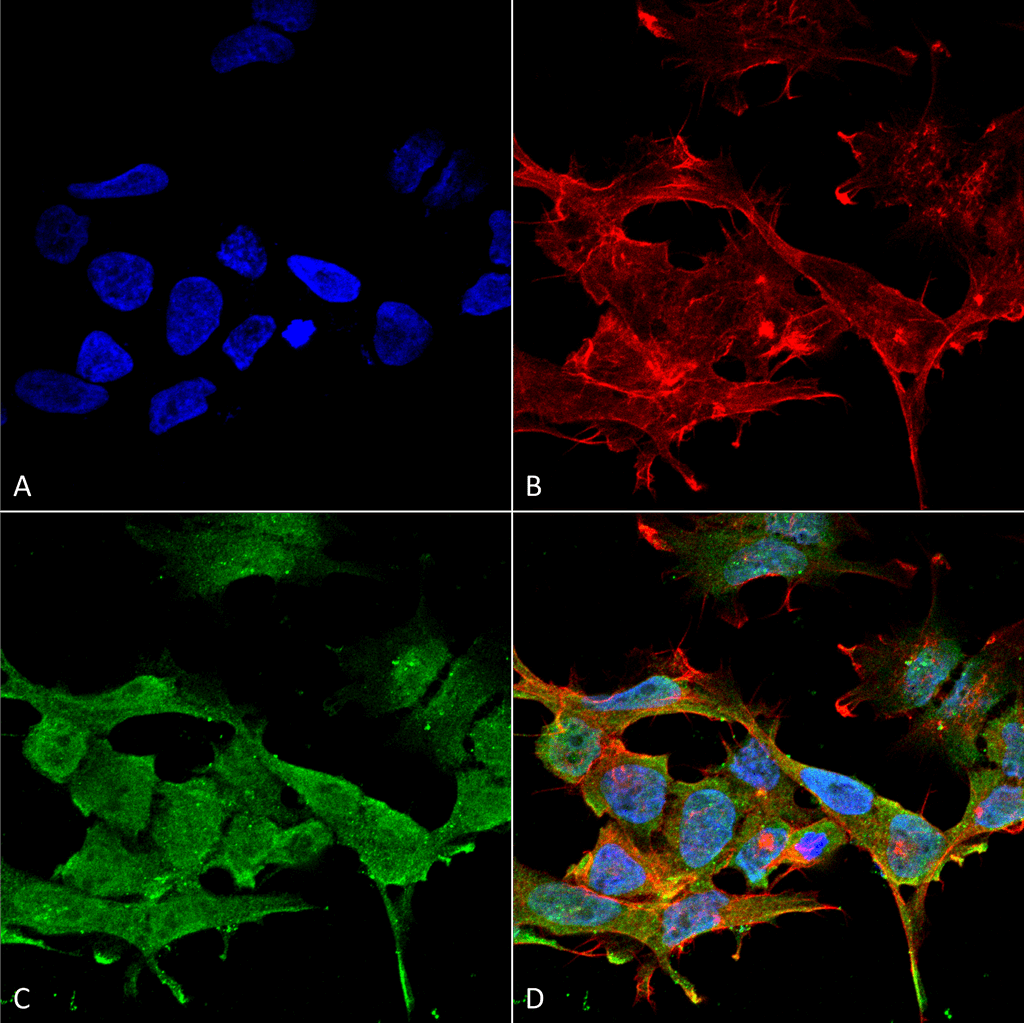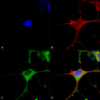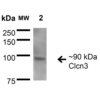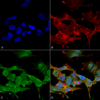Anti-Chloride Channel Protein 3 (Clcn3) Antibody (11566)
$466.00
| Host | Quantity | Applications | Species Reactivity | Data Sheet | |
|---|---|---|---|---|---|
| Mouse | 100ug | WB,IHC,ICC/IF | Human, Mouse, Rat |  |
SKU: 11566
Categories: Antibody Products, Ion Channel Antibodies, Products
Overview
Product Name Anti-Chloride Channel Protein 3 (Clcn3) Antibody (11566)
Description Anti-Chloride Channel Protein 3 Mouse Monoclonal Antibody
Target Chloride Channel Protein 3 (Clcn3)
Species Reactivity Human, Mouse, Rat
Applications WB,IHC,ICC/IF
Host Mouse
Clonality Monoclonal
Clone ID S258-5
Isotype IgG1
Immunogen Synthetic peptide correspond- ing to aa 98-115 (cytoplasmic N-terminus) of rat Clcn3 (accession no. NP_445815.2).
Properties
Form Liquid
Concentration Lot Specific
Formulation PBS, pH 7.4; 50% glycerol, 0.09% sodium azide.
Buffer Formulation Phosphate Buffered Saline
Buffer pH pH 7.4
Buffer Anti-Microbial 0.09% Sodium Azide
Buffer Cryopreservative 50% Glycerol
Format Purified
Purification Purified by Protein G affinity chromatography
Specificity Information
Specificity This antibody recognizes human, mouse, and rat Clcn3. It does not cross-react with Clcn4 or Clcn5.
Target Name H(+)/Cl(-) exchange transporter 3
Target ID Chloride Channel Protein 3 (Clcn3)
Uniprot ID P51792
Alternative Names Chloride channel protein 3, ClC-3, Chloride transporter ClC-3
Gene Name Clcn3
Accession Number NP_445815.2
Sequence Location [Isoform 1]: Lysosome membrane, Late endosome membrane, Cell membrane, Early endosome membrane
Biological Function [Isoform 1]: Strongly outwardly rectifying, electrogenic H(+)/Cl(-)exchanger which mediates the exchange of chloride ions against protons (PubMed:10915634). The CLC channel family contains both chloride channels and proton-coupled anion transporters that exchange chloride or another anion for protons (By similarity). The presence of conserved gating glutamate residues is typical for family members that function as antiporters (By similarity). {UniProtKB:P51790, PubMed:10915634}.; [Isoform 2]: Strongly outwardly rectifying, electrogenic H(+)/Cl(-)exchanger which mediates the exchange of chloride ions against protons (PubMed:10915634). May play an important role in neuronal cell function through regulation of membrane excitability by protein kinase C (PubMed:8155321). It could help neuronal cells to establish short-term memory (PubMed:8155321). {PubMed:10915634, PubMed:8155321}.
Research Areas Ion Channels
Background Ion channels are integral membrane proteins that help establish and control the small voltage gradient across the plasma membrane of living cells by allowing the flow of ions down their electrochemical gradient. Clcn3 mediates the exchange of chloride ions against protons and functions as an antiporter, contributing to the acidification of the endosome and synaptic vesicle lumen. It may play an important role in neuronal cell function through regulation of membrane excitability by protein kinase C.
Application Images




Description Immunocytochemistry/Immunofluorescence analysis using Mouse Anti-Clcn3 Monoclonal Antibody, Clone S258-5 (11566). Tissue: Neuroblastoma cells (SH-SY5Y). Species: Human. Fixation: 4% PFA for 15 min. Primary Antibody: Mouse Anti-Clcn3 Monoclonal Antibody (11566) at 1:50 for overnight at 4°C with slow rocking. Secondary Antibody: AlexaFluor 488 at 1:1000 for 1 hour at RT. Counterstain: Phalloidin-iFluor 647 (red) F-Actin stain; Hoechst (blue) nuclear stain at 1:800, 1.6mM for 20 min at RT. (A) Hoechst (blue) nuclear stain. (B) Phalloidin-iFluor 647 (red) F-Actin stain. (C) Clcn3 Antibody (D) Composite.

Description Western Blot analysis of Rat Brain Membrane showing detection of ~90 kDa CIcn3 protein using Mouse Anti-CIcn3 Monoclonal Antibody, Clone S258-5 (11566). Lane 1: Molecular Weight Ladder. Lane 2: Rat Brain Membrane. Load: 15 µg. Block: 2% BSA and 2% Skim Milk in 1X TBST. Primary Antibody: Mouse Anti-CIcn3 Monoclonal Antibody (11566) at 1:200 for 16 hours at 4°C. Secondary Antibody: Goat Anti-Mouse IgG: HRP at 1:1000 for 1 hour RT. Color Development: ECL solution for 6 min in RT. Predicted/Observed Size: ~90 kDa.

Description Immunocytochemistry/Immunofluorescence analysis using Mouse Anti-Clcn3 Monoclonal Antibody, Clone S258-5 (11566). Tissue: Neuroblastoma cell line (SK-N-BE). Species: Human. Fixation: 4% Formaldehyde for 15 min at RT. Primary Antibody: Mouse Anti-Clcn3 Monoclonal Antibody (11566) at 1:100 for 60 min at RT. Secondary Antibody: Goat Anti-Mouse ATTO 488 at 1:100 for 60 min at RT. Counterstain: Phalloidin Texas Red F-Actin stain; DAPI (blue) nuclear stain at 1:1000, 1:5000 for 60min RT, 5min RT. Localization: Membrane, Endosome, Endosome membrane, Cytoplasmic Vesicle, Secretory Vesicle Membrane. Magnification: 60X. (A) DAPI (blue) nuclear stain. (B) Phalloidin Texas Red F-Actin stain. (C) Clcn3 Antibody. (D) Composite.
Handling
Storage This antibody is stable for at least one (1) year at -20°C.
Dilution Instructions Dilute in PBS or medium which is identical to that used in the assay system.
Application Instructions Immunoblotting: use at 1-2ug/mL. A band of ~90kDa is detected.
Immunohistochemistry: use at 1-10ug/mL.
These are recommended concentrations. User should determine optimal concentrations for their application.
Positive control: Rat brain membranes.
Immunohistochemistry: use at 1-10ug/mL.
These are recommended concentrations. User should determine optimal concentrations for their application.
Positive control: Rat brain membranes.
References & Data Sheet
Data Sheet  Download PDF Data Sheet
Download PDF Data Sheet
 Download PDF Data Sheet
Download PDF Data Sheet

